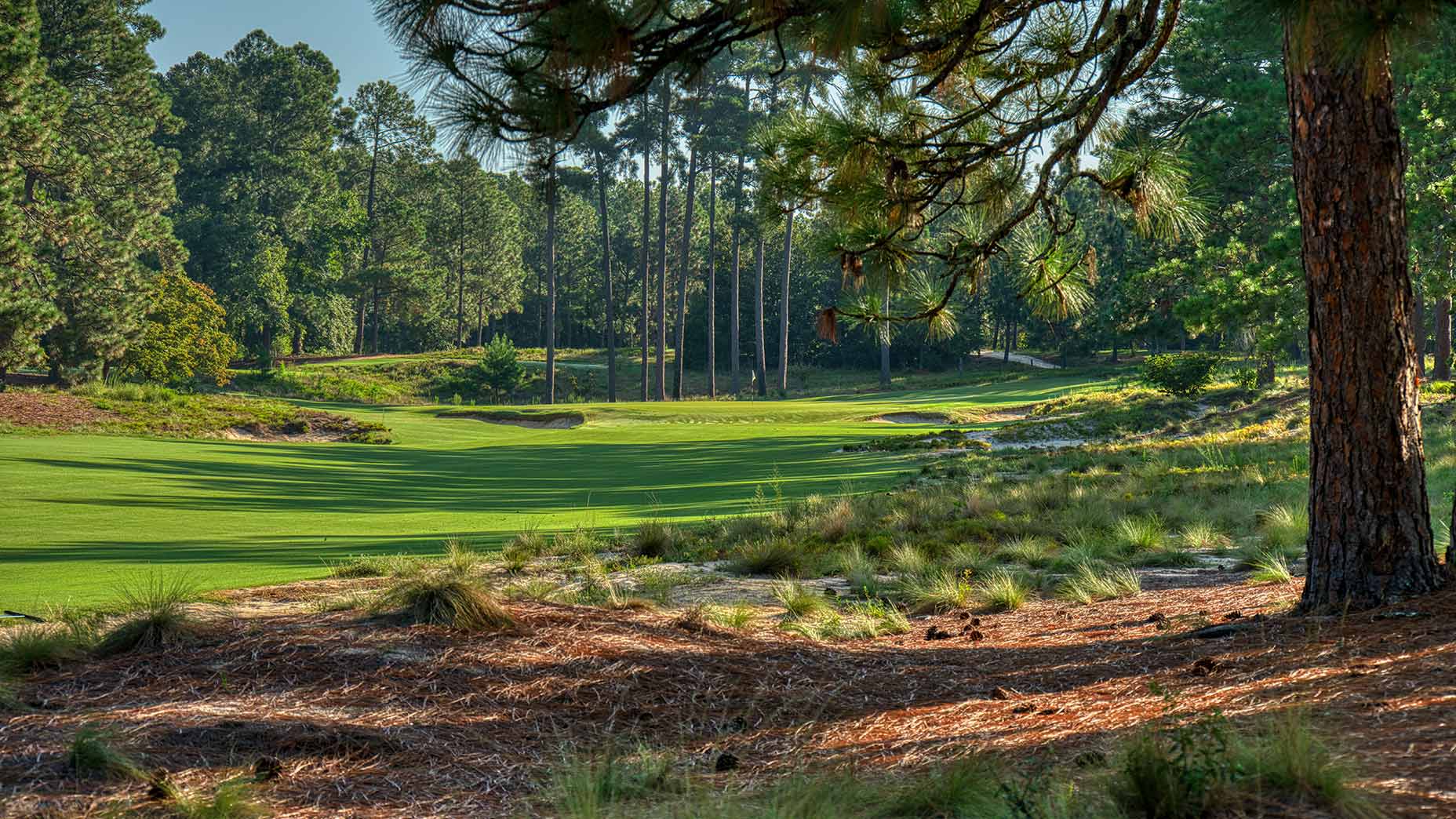Like his mentor Old Tom Morris, Donald Ross avoided high stakes gambling on the course. But he was not averse to high-pressure competition. His most famous layout was designed with that in mind. At Pinehurst No. 2, which Ross completed in 1907, the architect said he aimed to present an exhaustive exam that required “every type of shot which a golfer of championship ability should be qualified to play.” Mission accomplished. The finished work was fair. (Ross, in fact, described it as “the fairest” tournament test he had ever created.) It was also fierce, a proving ground so stout that it became a stage for many of the game’s most prestigious events.
Over the decades, even as it welcomed multiple majors and a Ryder Cup, No. 2 evolved, and aspects of it drifted from its Rossian roots. In 2010, though, a restoration by Bill Coore and Ben Crenshaw revived the sandy wastes that had been there at the start while bringing back the contours and strategic choices that many felt had faded over time. Four years later, when the U.S. Open returned to Pinehurst for the third time in its history, Martin Kaymer ran away with the title but only three players finished under par for the week. To further underpin its tournament stature, No. 2 has since been named by the USGA as an anchor site for the U.S. Open, tagged to host the national championship five times over the next 25 years, starting with the 2024 edition, which takes place this month.
True to Ross’ wishes, the course is a challenge from start to finish. Here’s a look at the six holes that most punished the field in 2014, with insights from Coore, Crenshaw and Kaymer on what makes them so demanding.
No. 2 / 500 yards / Par 4
2014 U.S. Open scoring average: 4.339 (3rd hardest)
“From the tee, it looks very inviting to go up the right,” Crenshaw says of this long, doglegged two-shotter. “It seems like a good way to cut off distance.” But it’s a bad idea, as the slightest push brings a sandy waste and wire grass into play. The proper line is up the left, flirting with a pair of fairway bunkers, which leaves a better angle to a green defended by a deep bunker on the right and a prominent hump in the front center that shrugs shots off in all directions. Says Kaymer: “I never went at the flag here. I was just thinking middle of the green.”
No. 4 / 528 yards / Par 4
2014 U.S. Open scoring average: 4.262 (6th hardest)
Some bogeys are better than others. On Saturday, in 2014, Kaymer carded what he called “a very good 5” here after tugging his drive into the dunes on the left. That’s the side to favor off the tee if you want to take advantage of the fairway’s tilt and reduce this mammoth hole to a more manageable size. But stray too far, as Kaymer did, and you wind up in a world of sand and wire grass, with a hanging lie and a long, uphill second shot to yet another canted, contoured green with a bunker at the front left and all kinds of slippery trouble if you send your approach deep.

No. 6 / 216 yards / Par 3
2014 U.S. Open scoring average: 3.374 (1st hardest)
You could talk yourself blue when talking about the turtleback greens on No. 2. “They’re all challenging,” Coore says. But with bunkers left and right, and contouring as hard to read as hieroglyphics, the 6th, according to Coore, “might be the toughest of them all.” In advance of the 2014 U.S. Open, it got even more demanding when the USGA asked Coore and Crenshaw to make room for a new front-right hole location, which, given the tilt behind it, “made two-putting very difficult if you went past the pin.” Not that other spots were any bargain either. In the third round that year, Kaymer hit the 6th in regulation, then putted off it and wound up with a bogey. “There’s really no room for error,” he says.
No. 8 / 492 yards / Par 4
2014 U.S. Open scoring average: 4.336 (4th hardest)
A par 5 for resort play, the 8th morphs into a par 4 for the U.S. Open, but length is the least of its defenses. For starters, Coore says, the serpentine fairway can be difficult to find, and the tabletop green calls for a laser-precise approach to hold the putting surface. What’s more, he notes, approaches that miss long or left result “in one of the most difficult recoveries on the course.” As evidence, we remind you of John Daly’s meltdown here in the 1999 U.S. Open, when he putted three times from behind the green with the same sad result before he polo-whacked the ball as it rolled back toward him.

No. 11 / 478 yards / Par 4
2014 U.S. Open scoring average: 4.323 (5th hardest)
The demands of the back nine begin in earnest with a shot to a fairway that is not as wide as it appears. Further complicating matters, Crenshaw says, the hole plays into a prevailing wind to a green with rumpled wings on either side that make for “a very elusive approach.” Flag-hunting is foolish, unless you flush a drive into the proper position; for a hole cut left, it helps to come in from the right and vice versa. Even then, Kaymer says, it’s best not to get too bold. “I hit 2-iron off the tee here,” he says, “just to keep it in play. You’re not thinking about birdie. You’re just trying not to lose ground.”
No. 16 / 536 yards / Par 4
2014 U.S. Open scoring average: 4.341 (2nd hardest)
A hole that Coore describes as “one of the most photogenic” on the course is both a beauty and a beast. Like the 8th, it transforms from a par 5 into a par 4 for the championship, and though it plays slightly downhill from the tee toward an open-fronted green that allows for run-up shots, there’s nothing easy about the approach. The putting surface, Coore says, “is smallish and elusive, with subtle, artistic contours” and sloping shoulders that make recoveries a headache for the game’s top talent. In 2014, Kaymer played the 16th at one-under for the event, a sweet feat on a hole on which the field averaged 4.341 for the week.










